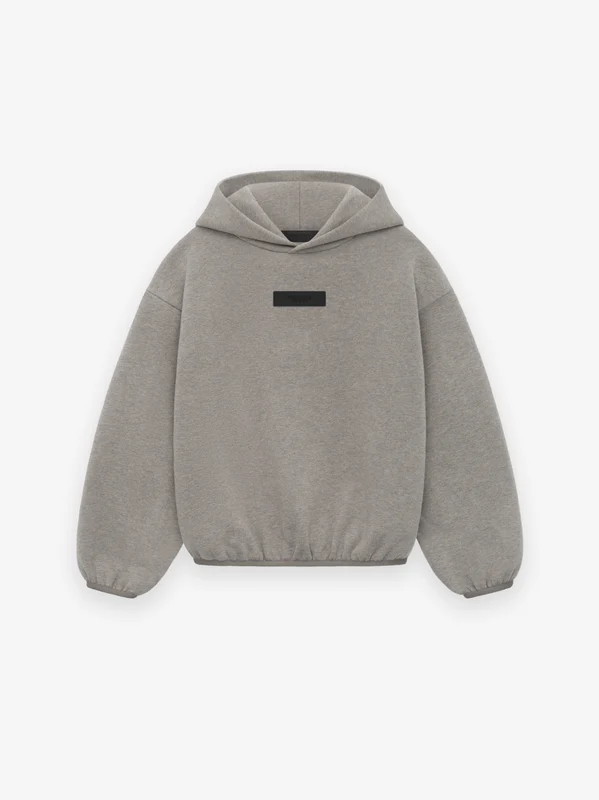Hoodies have become more than just a comfortable piece of clothing; they are now an emblem of style, rebellion, and cultural identity. From their humble beginnings as utilitarian garments to their current status as fashion icons, hoodies have evolved significantly over the years. This article delves into the fascinating journey of Essentials Hoodie through pop culture, exploring how they’ve transitioned from sportswear to mainstream fashion and what they symbolize today.
Origins and Early Usage
The hoodie’s roots trace back to the early 20th century, with its origins in sportswear and work clothing. The concept of the hooded sweatshirt was introduced by the sportswear company Champion in the 1930s. Originally designed for athletes and laborers, the hoodie was intended to provide warmth and protection against the elements. It was a practical garment, favored for its functionality rather than its style.
The 1970s: The Birth of Hip-Hop Culture
The 1970s marked a significant turning point for the hoodie, especially with the rise of hip-hop culture. As hip-hop emerged from the Bronx, New York, so did a new fashion statement. Influential artists like Run-D.M.C. and LL Cool J began wearing hoodies, which quickly became associated with the genre. This era saw the hoodie transform from a piece of sportswear into a symbol of urban street style and rebellion.
Hip-hop culture embraced the hoodie as a way to express individuality and defy societal norms. It became a canvas for self-expression, with artists customizing their hoodies with bold graphics, slogans, and brand logos. This period laid the foundation for the hoodie’s future prominence in pop culture.
The 1980s and 1990s: Mainstream Popularity
By the 1980s and 1990s, the hoodie had cemented its place in mainstream fashion. The rise of skate culture and the grunge movement played a significant role in popularizing the hoodie as a casual, everyday garment. Skateboarders and grunge musicians adopted the hoodie for its comfort and practicality, often pairing it with ripped jeans and sneakers.
Fashion designers also began to take notice. Brands like Stüssy, Supreme, and Off-White started incorporating hoodies into their collections, blending streetwear with high fashion. This fusion of styles brought the hoodie into the spotlight, making it a must-have item in both casual and luxury wardrobes.
The 2000s: The Hoodie as a Fashion Statement
The 2000s saw the hoodie reach new heights in fashion. Celebrity culture and the rise of social media played crucial roles in its popularity. Icons like Kanye West, Rihanna, and Justin Bieber were frequently seen sporting hoodie, which further fueled their status as fashion staples.
During this decade, the hoodie also became a symbol of counterculture and activism. It was worn by protesters, activists, and those seeking to challenge societal norms. The iconic image of hoodies worn by figures like Trayvon Martin highlighted the garment’s role in social and political movements.
The 2010s: The Hoodie’s High Fashion Era
The 2010s marked the hoodie’s transition into high fashion. Renowned designers like Balenciaga, Gucci, and Off-White featured hoodies prominently in their collections. The hoodie became a symbol of luxury and sophistication, often seen on runways and in fashion magazines.
This era also saw the rise of collaborations between streetwear brands and high fashion houses. Limited-edition hoodies, designed by renowned artists and designers, became highly sought after by collectors and fashion enthusiasts. The hoodie’s versatility was showcased through various iterations, including oversized fits, premium fabrics, and unique designs.
The 2020s: The Hoodie in a Digital Age
In the 2020s, the hoodie continues to evolve, reflecting changes in technology, culture, and society. The garment has become a staple in digital culture, with virtual influencers and online personalities frequently showcasing their hoodie collections. The rise of e-commerce has made it easier than ever for consumers to access a wide range of hoodie styles and brands.
Sustainability is also a key focus in the current era. Many brands are now producing eco-friendly hoodies, using recycled materials and sustainable practices. The hoodie’s role in promoting environmental awareness highlights its continued relevance in contemporary fashion.
The Symbolism of the Hoodie
Throughout its evolution, the Essentials Hoodie has come to symbolize various aspects of culture and identity. For many, it represents comfort, casual style, and a sense of belonging. It has also been used as a form of protest and empowerment, serving as a tool for raising awareness and challenging societal norms.
The hoodie’s adaptability allows it to fit seamlessly into various contexts, from athletic wear to high fashion. Its ability to convey different messages depending on its styling and context makes it a powerful and versatile garment.
Conclusion
The evolution of the hoodie in pop culture is a testament to its enduring appeal and significance. From its origins as practical sportswear to its current status as a fashion icon, the hoodie has continuously adapted to reflect changing trends and cultural shifts. Its journey through pop culture showcases its ability to transcend boundaries and remain relevant in an ever-changing fashion landscape.
As we look to the future, it’s clear that the hoodie will continue to play a prominent role in fashion and culture. Whether it’s through its association with streetwear, luxury fashion, or activism, the hoodie remains a symbol of style, comfort, and self-expression.



More Stories
Exploring the Latest Trends in the USA
Wearing Simple Yet Sophisticated Hoodies
Corteiz Hose—Your Style and Effortless Cool